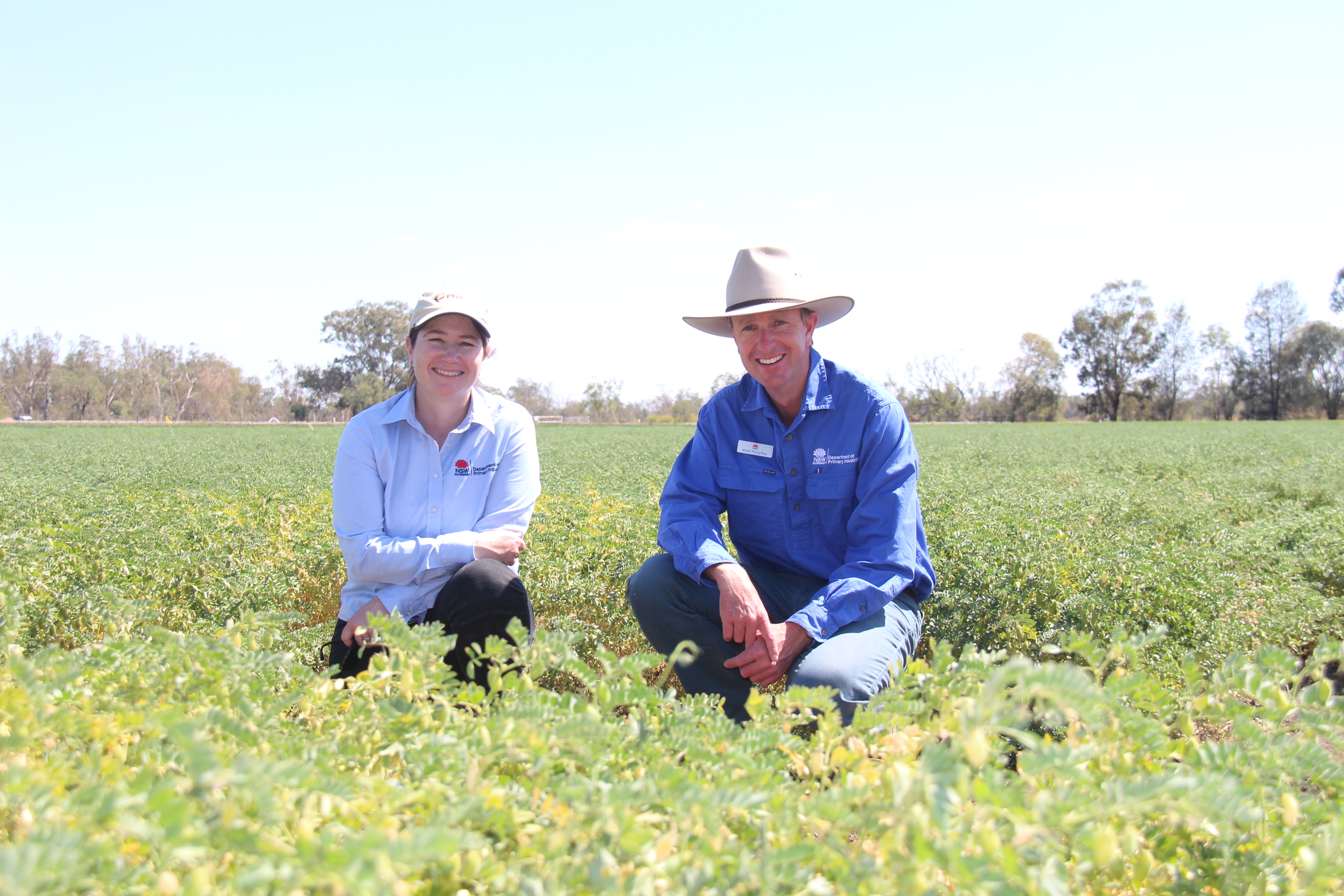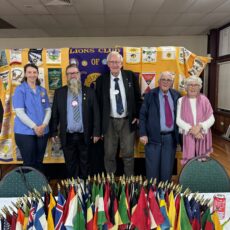Chickpeas were a hot topic of conversation at the NSW Department of Primary Industries field day held at the Australian Cotton Research Institute on October 2.
“Chickpeas have got a really critical role in the farming system,” said Dr Kristy Hobson who leads the national chickpea breeding program for DPI.
“They’ve really been key around breaking the disease cycle for cereal crops.
“Chickpeas fit really well into the northern growing farming system that’s cereal based – whether it be wheat or sorghum or barley.
“We breed both the desi and kabuli type, kabuli is the one that makes the hummus.”
Dr Hobson said that this year because of the drought, a lot of DPI’s breeding program is being undertaken at the Australian Cotton Research Institute, Narrabri.
“We’ve moved quite a large portion of our breeding program here to ACRI because of the irrigation and the security it offers the program.
“Our breeding program is quite a slow game.
“If you have a delay or lose a year, it’s critical,” said Dr Hobson.
“ACRI basically allows our program to continue – water security gives us seed security,” she said.
“Whilst it’s fabulous that we’ve got this security at ACRI, we are still dealing with some of the issues around not getting disease screenings in fields because we can’t get the epidemics that we want without rainfall,” added Dr Hobson.
Dr Hobson also spoke about how the profitability of chickpeas had grown in recent years.
“They’re now a significant part of a profitable broad-acre cropping enterprise in the northern region,” she said.
“And so, growers expectations of the crop have also increased because it’s just such a significant part of their profitability.
“Australia is the largest exporter of desi chickpea in the world,” she added.
Chickpeas are a great source of protein and popular in countries such Bangladesh and India.
Dr Hobson said she had a lot of interest from agronomists and growers at the field day about a new variety of desi chickpea.
“We wanted to showcase some of the varieties that are getting closer to release to growers, particularly a desi variety which will get a name but it’s being tested under the breeding code -CICA 1521.
“We’re looking to launch that next spring and growers will be able to grow that in 2021.
“So that’s very exciting -it’s been yielding really well and we think it’ll have great uptake and improve growers profitability, particularly in this area.”
DPI’s leader of agronomy and crop protection Keith Pengilley also spoke about the ‘increasing popularity’ of chickpeas.
“In the last couple of years we’ve seen very high chickpea prices which have driven the expansion of chickpeas and the intensity of chickpeas across our region,” he said.
Mr Pengilley also strongly supported Dr Hobson’s views about the importance of keeping research trials going to help farmers despite the current dry conditions.
“Let’s be honest, it’s a shocking year for everyone,” he said.
“We would normally conduct trials at Bellata, Edgeroi, Rowena and Burren Junction for example, but we made the decision back in February that given the situation and how it was looking and the fact we’ve got access to irrigation water here at ACRI – the decision was made to move all our research back here where we could guarantee crops would be able to establish and we’d be able to get them through to harvest so we can derive meaningful results for growers and advisors.
“So next year, if it’s a normal season, a thing which we all hope for, growers then will be armed with the latest information on how to manage crop diseases, crop agronomy practices but also be exposed to the new varieties coming out of our chickpea and durum breeding programs.”
Mr Pengilley said that the short term funding cycle of projects also meant missing a year of research could be costly.
“We get projects funded for three or five years and we can’t afford to miss one year of those because it’s one year we don’t get results, so it’s less information we’ve got available to growers and it’s less robust information too. “
Mr Pengilley said the field day looked at a range of cereal and pulse pathology research, along with cereal agronomy work that’s being undertaken.
He said the field day was also about demonstrating the work the department does on behalf of grain growers right across the North West region.
“The attendance was very good given the season, and also it’s great to have a large number of advisors here because they have so many touch points with growers that we sometimes struggle with at a research level.
“There’s an analogy – you can provide the information to one grower or you can provide it to one agronomist, and that agronomist then has essentially 30 clients that he or she services.
“So the information is getting out.”
To order photos from this page click here








